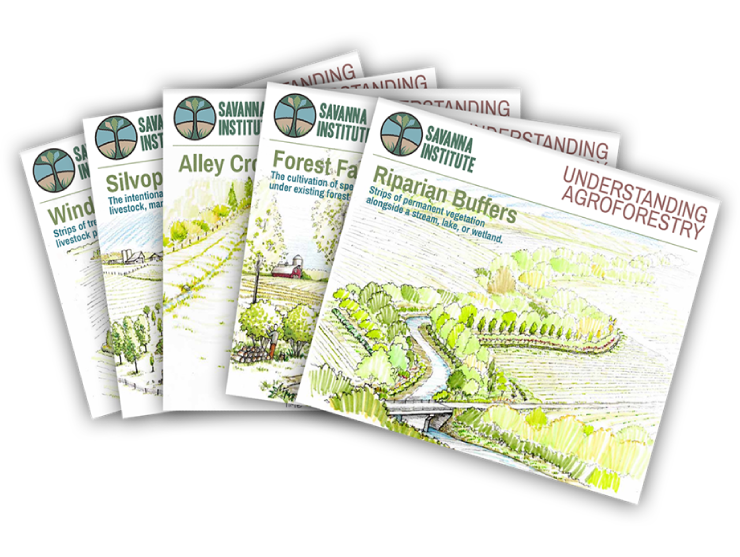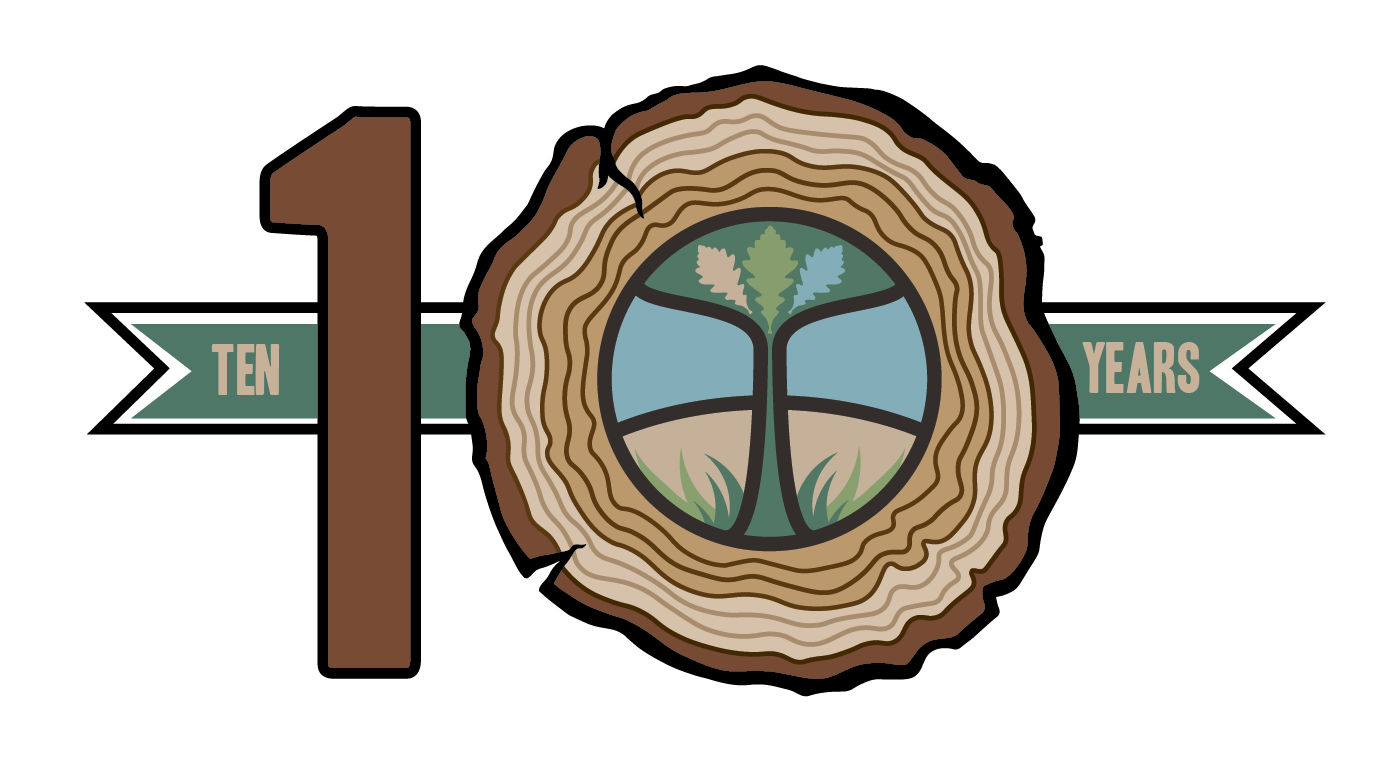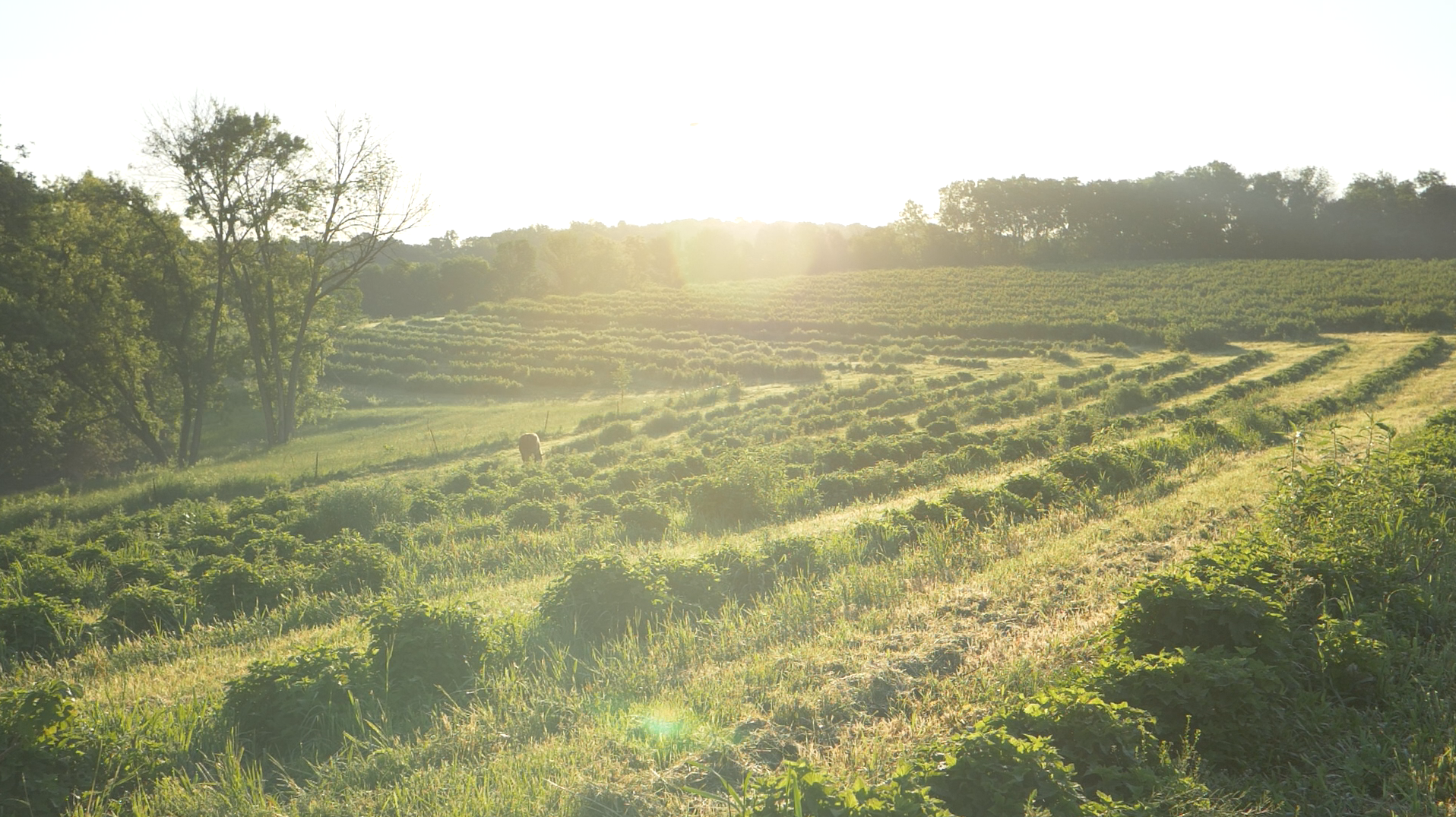Water Quality Program
Helping people plant trees for water quality
Nutrient pollution in our waterways has reached a critical level. Green, algae-filled lakes and streams are common during the summer months in the Midwestern US. Downstream, a dead-zone has developed in the Gulf of Mexico as a direct result of nutrient run-off from farm fields into the Mississippi River Basin. Planting trees on farms and along shorelines can reduce nutrient pollution in local lakes, rivers, and streams. Our Water Quality Program establishes demonstration farms around the Great Lakes, and shares research and education on the potential for agroforestry systems to meet the challenge of the water crisis.
Are you subscribed to our newsletter?
Savanna Institute Program Manager Devon Brock-Montgomery introduces you to water quality work already in progress.
Sustainable farming practices include trees
Trees planted along waterways stabilize the soil during flooding. Riparian buffers are strips of permanent vegetation planted along waterways that reduce erosion and retain nutrients in the soil during floods.
Trees slow farm field runoff during heavy rainfall. Farmers use alley cropping to cultivate annual crops with tree crops in regularly spaced rows and silvopasture to plant trees and forage in livestock pastures. Agroforestry practices slow runoff and encourage infiltration, protecting the land from heavy rains.
Learn more in our Understanding Agroforestry Infographics.


5 Facts about Water Quality
- Great Lakes communities will spend an estimated $2 billion dollars in the next 5 years repairing coastal damage (Great Lakes and St. Lawrence Cities Initiative)
- Lake Superior is warming at three times the global average, and the second fastest in the world. Lake Erie’s algal bloom lasted well into the fall this year (Alliance for the Great Lakes)
- One pound of phosphorus can produce 500 pounds of algae. (Dane County L&W Dept.)
- People who swim in HABs (harmful algal blooms) can experience irritation of the skin, eyes, throat, nose, and lungs. (CDC)
- In Lake Erie, 70% of nutrients in runoff are from agricultural fertilizer application, with the remaining 30% from animal manure. (IJC)

Photo by Randall Hyman, GLPF

Photo by Randall Hyman, GLPF
Why Agroforestry?
We know that the deep roots of perennial crops hold nutrients in farm fields better than annual crops. When farmers plant tree crops and other perennials on their farms, they slow runoff, encourage infiltration, and reduce erosion during heavy rains. It is important that every farm considers how water moves across the landscape, and we’re here to help put trees to work for water quality. Together with our partners, we’re creating the demonstration farms, adoption toolkits, and community-building events needed to transition agricultural land to agroforestry.

Education and Outreach
With financial support from the Great Lakes Protection Fund, the Savanna Institute and its partners are investing heavily in demonstrating the potential for widespread agroforestry to impact an entire watershed.
Demonstration farms being established in Michigan and Wisconsin will be educational hubs for farmers and community members to learn more about the water quality benefits of farming with trees. Here we will conduct research into agroforestry’s full impact on an ecosystem. A series of toolkits created by partners will empower landowners and farmers with best practices and lessons learned on leasing, financing, and tree selection. Plus, our team of media specialists will document the process of establishing a variety of agroforestry practices in different contexts. With this broad set of resources, we will guide farmers each step along their path to planting trees for water quality.
Partners
WISCONSIN
Ozaukee-Washington Land Trust
Riveredge Nature Center
MICHIGAN
Chiwara Permaculture Research and Education
Newaygo County Conservation District
Oceana County Conservation District
Kropscott Environmental Farm Environmental Center
REGIONAL
Farm Commons
Croatan Institute
Savanna Institute
Great Lakes Protection Fund

Research In Progress
Savanna Institute’s Research Team monitors water and soil quality to quantify agroforestry’s impact on the ecosystem. At Demonstration Farms in Wisconsin and Illinois, we’ve dug 100 cores each one meter deep to track soil carbon. This research will help inform standards for how climate mitigation is quantified across carbon markets.
You can volunteer for stream monitoring at our Spring Green Campus in Wisconsin.


Technical Service Program
Get help planning your agroforestry system. Contact a community agroforester to ask more about how you can adopt perennial agriculture on the land in your care.

“I trust Savanna Institute to be careful stewards of land that’s important to me and my family, and to develop and spread farming practices that will increase biodiversity and fight climate change.”
– Jack L., Donor


